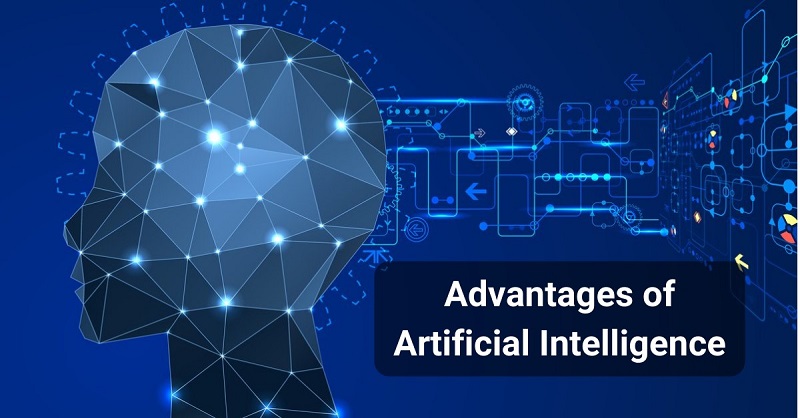In the last 50 years, machines have become much smarter. It has emerged as a more practical application in our day-to-day lives than most people realize. Artificial intelligence (AI) was once a radical concept among computer scientists in the 1950s. Artificial intelligence is now playing a crucial role in a number of industries, including marketing, finance, data analysis, and healthcare.
You can type into a search engine and AI systems will predict what you’re typing. As a result, they show you personalized advertisements based on your purchases. Your favorite music is curated into playlists that serve up personalized ads. Artificial Intelligence systems can even assist doctors in diagnosing and treating patients’ illnesses more quickly.
Many industries have benefited from innovations in the AI field. We have more efficient processes and accurate forecasts, and convenient technologies are more available than ever before. As we start our series on the advantages and disadvantages of AI, we’ll examine how artificial intelligence can ease our lives in a few key ways.
If you want to work in machine learning then you should buy a monitor according to the requirements of AI/Machine learning for your help we review some best quality monitors like Best Vertical Monitor for Coding.
Increased Efficiency:
AI systems make humans more efficient, which is one of their greatest advantages. Small, repetitive tasks can be completed faster using artificial intelligence, as can much larger, complex tasks. It is impossible for AI systems to be tired thanks to their inexhaustible power.
Although AI may seem glamorous in movies, it’s not always the case. This technology is often used for mundane, monotonous, time-consuming tasks that human beings would find unappealing. By using the advantages of artificial intelligence, insurance companies can process claims faster and at a higher volume than they can manually, freeing up more time for humans to deal with other things.
You can also use software to automate boring tasks like data entry by reading and mimicking a user’s keystrokes. Additionally, AI can provide actionable insights when used in conjunction with other technologies, such as machine learning.
Improved Workflows:
Frequently, AI is use to automate entire tasks, but it can also applied in practical ways to improve human processes. In professions like education, the media, and entertainment, as well as law enforcement, deep learning technologies like natural language processing have transformed the way people work. ASR technology automatically generates transcripts from any audio or video by converting the spoken word to text.
Almost instantly, an ASR transcript is available for a three-hour deposition. Managing media assets and editing content faster is made easier with automated transcripts by directors and video producers. The automated transcription of body camera footage allows police officers to find key evidence easily. There are many more ways that AI can simplify workflows.
Lower Human Error Rates:
AI systems do not experience fatigue, as we have already discussed. Humans, however, get tired after some time. Human brains can only focus on one task for a period of time before becoming distracted.
People are more vulnerable to making mistakes and poor decisions if they are tiring. In repetitive jobs, humans are more likely to make errors – repetitive tasks are less likely to keep them from losing their concentration.
But AI systems are programing for their functions, so they don’t have to focus. AI systems eliminate human error risks for those assigned these tasks, producing more accurate results.
Deeper Data Analysis:
Data is awash in modern businesses, but how are they utilizing it to their advantage? Unlike manual data analysis, in which large amounts of data must process and analyzing at remarkable speed, AI systems can do the job in minutes.
On the basis of your historical data, AI algorithms can quickly identify trends, identify information, and make decisions. For example, algorithms can use to analyze marketing materials, identify customer preferences, and provide us with actionable insights base on those behaviors.
More Informed Decision-Making:
Through this deeper analysis of data, businesses can make better, more informed decisions that will benefit their operations. A classification model is a good example. Using historic training data, these machine learning algorithms provide a conclusion. After the data has processing, the model will categorize the new data, or “label” it.
When a business examines customer attrition, it employs classification models to assess churn rate forecasts. A business can use these models to generate a list of customers who are at risk for churning, allowing it to take proactive measures to prevent it. Classification models also assist marketers in assessing the compatibility of customers with specific products and services.
24 / 7 Availability:
American workers work on average for 8.8 hours a day, according to the Bureau of Labor Statistics. However, how productive we are during that time is another matter. And machines don’t go to the restroom.
Catching up with colleagues doesn’t require them to leave their desks. You can be sure that they do not leave at 5 p.m. With digital assistance solutions like chatbots, customers can reach out to the company at any time.

